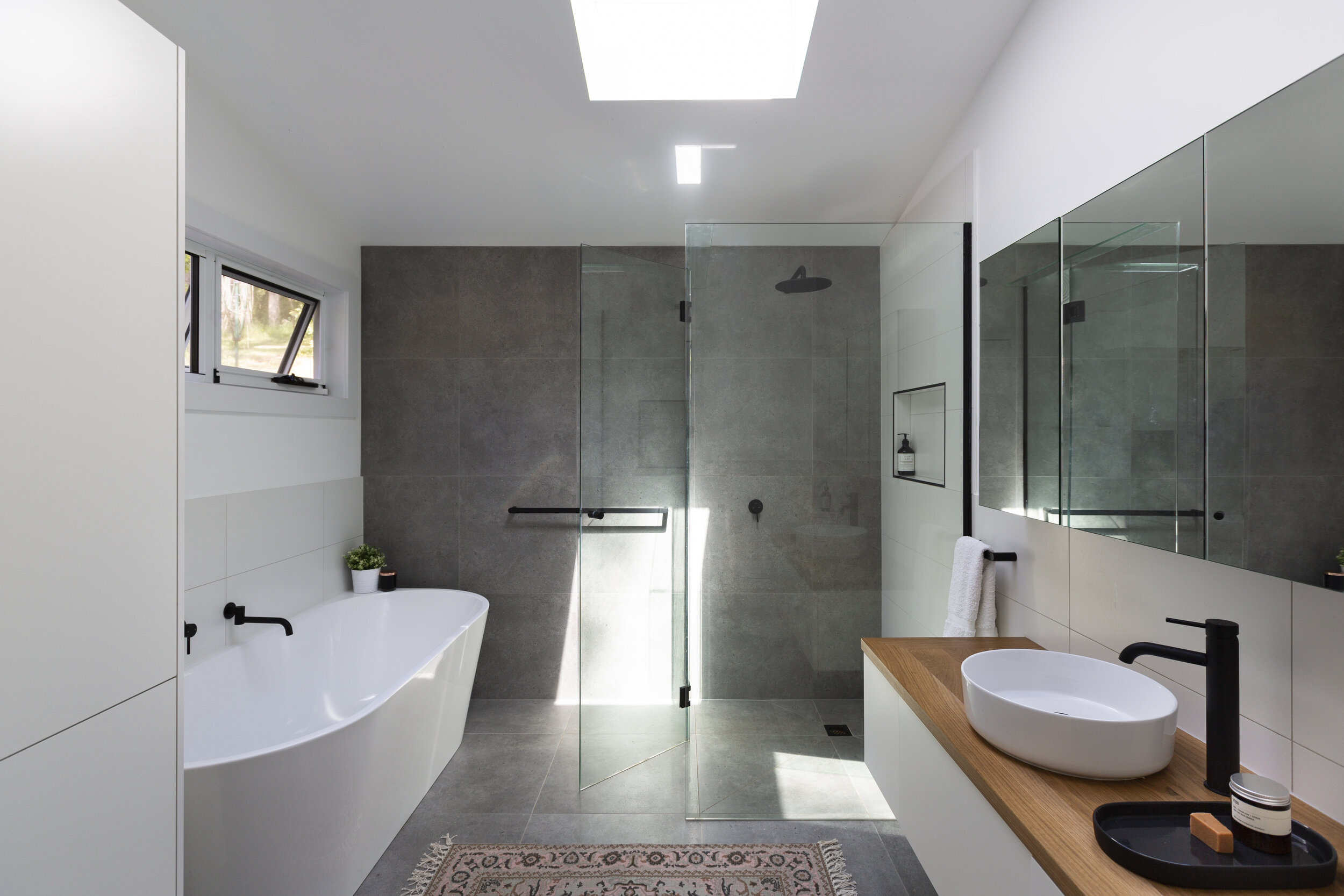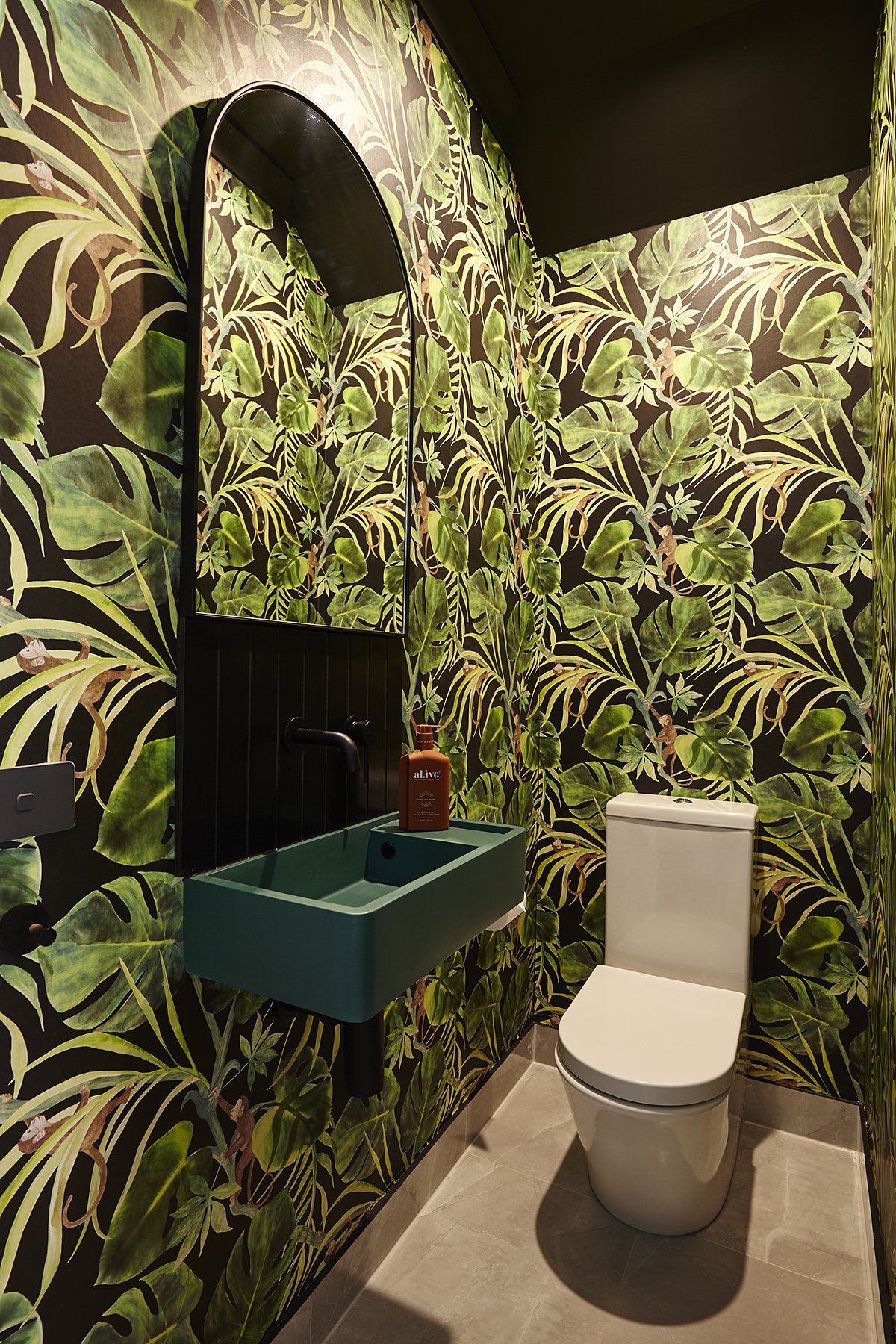Five Things To Consider When Planning Your Bathroom Renovation
2023 seems to be the Year of the Bathroom for Britt White Studio, with ten bathrooms on the table currently going through various design and construction stages. If you’re planning a bathroom renovation, there are a few key things to consider, which we have outlined below. Some are Australian building standards, and others are considerations, but either way, these trusted tips will help you space plan your new bathroom for the bathroom you’ve always wanted.
Miller Bathroom - image by Simon Feritto 2022
1. Determine What You Want Upfront
A bathroom is a vital part of the home and a room used multiple times a day, so it’s essential to write a checklist of everything you want to have in the room before determining the layout. Writing your wish list down and thinking about everything upfront, helps your designer to space plan the zones and also gives you an indication of the renovation costs. This also helps you to determine if you actually have space for everything and helps you categorise things into ‘must-haves’ and ‘wishlist’ items if the space allows.
If you’re doing this yourself with a builder, we have created a list of things to consider. Download the Bathroom Wishlist Checklist here to help you get started.
Blairs Chalet bathroom - image by Three Fold Studio, 2023
2. Height of Vanity
The height of your bathroom vanity usually sits at 850Hmm off the floor. This is different to the kitchen at 900H as in the bathroom you have a smaller space to do all the things you need, so the lower height makes it a more accessible work surface. If you’re mounting your vanity, the top of the vanity needs to be at this height, so factor that into your overall height for the plumbing.
Beers Lane bathroom - image by Rhys Holland, 2019
3. Lighting
Lighting is a crucial consideration for every bathroom. Like a kitchen, there are different types of lighting to consider in your bathroom - natural light, task lighting and ambient lighting.
Natural light - the first thing to work out is the aspect of the room and the direction the natural light comes from (assuming you have a window in there, which everyone should have, if not, you probably need a skylight). This helps you determine the time of day the room will have the most light and helps to determine the space plan for the room.
Task lighting - consider a wall light or two next to your mirror instead of a downlight above so it floods your face directly with light. That way, you can avoid those ghastly shadows under your eyes when the light is positioned directly above.
Ambient lighting - if your preferred vanity can include strip lighting underneath for a small extra fee, DO IT! This can be set to a timer, so when the kids (or you) have a midnight dash to the loo, the timer pops on, and you’re not left fumbling for a light switch in the dark. Alternatively, it could be a sculptural wall light (like below at our Bright Views house) or a pendant light over the bath - both of which add a subtle mood, playfulness, and soft lighting to the room.
HOT TIP
Make sure to have all your lights on different switches so they can be turned on separately. This is called ‘layered lighting’, and by doing this, it helps cater to everyone and the different times of day and the other user’s moods accordingly.
All lights in bathrooms need an IP rating of 44 or above. If an electrical product has an IP44 rating, it is protected against most solid objects and can easily withstand direct jets of water splashes.
Bright Views main bathroom - image by Simon Ferrito, 2020
4. Tiles
We are known for our love of statement tiles, and we certainly feel the more playful you are with your tile selections, the better the outcome. When it comes to selecting your floor or wall coverings, there are a few things to consider:
Floor Tiles - not all tiles are made the same, and there are different slip ratings for floor tiles vs wall tiles. A Slip Rating is a test of a tile surface and its Slip Resistance. These ratings have been developed according to Australian Standards and help select tiles where safety is a priority. For Australian Residential purposes, a floor tile with a Slip Rating of P0-P5, with P0-P3 being indoor flooring and P4-P5 being outside or around a pool. In this test, the higher the number, the lower the risk of slipping. Tiles with slip resistance generally have a textured surface.
Wall tiles - we generally recommend selecting three different tiles for a bathroom. The floor tile (with its correct Slip Rating), a general wall tile, and a statement wall tile. We start by determining what the focal point of the bathroom is, which usually defines the feature tile's location. Sometimes this can be a whole wall, or other times; this could be across all walls up to a certain height.
Alternatives - don’t just consider tiles for the walls. With so many tile options on the market, think about the style of the home/bathroom and if an alternative covering suits what you want, don’t hesitate. For example, waterproof VJ Panelling was the perfect fit for the country-style home of Bright Views (above), where we used them to bring intimacy into the main bathroom where the ceiling height was 4.5m or this wallpaper that jumps out at you in the powder room at Gavan Street (below). Always remember to use waterproof products in all bathrooms.
Gavan Street powder room - image by Simon Ferrito, 2021
5. Material board
You’ve written your checklist, nailed down the lighting and chosen your tiles, now it’s time to pull your material board together. For every fixture or fitting decision you make, we recommend you request, or purchase a sample of each product. This is a must-do step for every bathroom! Even if you can’t get a full-sized sample, still try and request/purchase a smaller sample. Or if your tiles are huge (we recently specified a 1200Hmm tile!) take all your other samples/materials into the tile shop and photograph them all together. No one will judge you, the tile shop has seen it all before!
Believe us when we say this step is imperative. It’s the only way to see all your selections together; to ensure the undertones are cohesive and remove any doubt before you purchase.
Material board for the Miller Bathroom - image by Britt Howard






